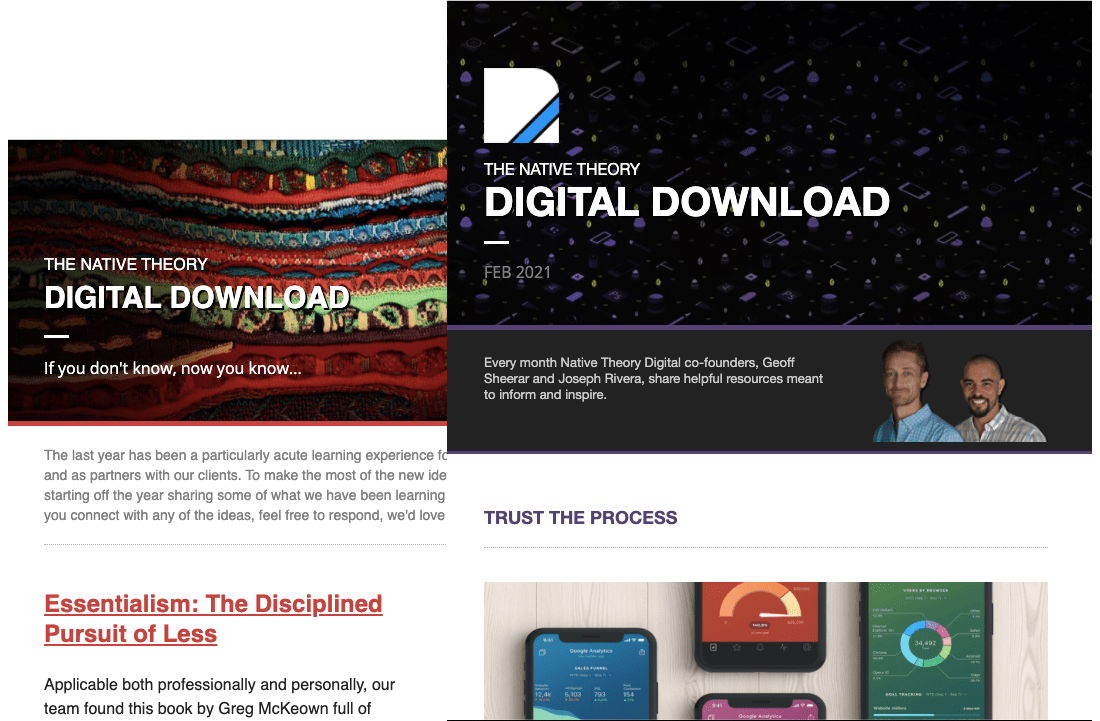As technology continues to advance at an unprecedented rate, some organizations find themselves struggling to keep up. One particular area where companies are feeling the pressure is in the realm of Artificial Intelligence (AI). AI is already revolutionizing industries, and it’s only a matter of time before it becomes a key part of any organization’s strategy.
In my years of advising clients about the digital tools best suited to the needs of their organizations, there has never been a tool like this. Within our work, Native Theory has already been using tools that employ AI, like ClickUp and ContentStudio. Now we have testing out AI in new areas, as well as developing ways with our clients that they can begin implementing AI to their own advantages.
Three Key Benefits of Using AI
The implementation of AI is already transforming the way businesses operate on many fronts. Two fundamental aspects of AI with potentially immediate impactful benefits include:
- Save Time and Boost Productivity: AI can more quickly complete tedious and time-consuming operational tasks, freeing up you and your employees to focus on more critical work. For example, an organization can use AI to accelerate the creation of communications, processes, and internal documents, all tasks that can take up time, as well as prevent you and your employees from focusing on higher-level work.
- Enhance Content Creation: All organizations need some kind of content to be relevant today, and AI-powered tools can help small businesses create professional-quality content without the need for dedicated employees.
- Increase Your Competitive Advantage: Starting to use AI now can provide you with a competitive edge by enabling you to potentially innovate faster, optimize operations, and stay ahead in a rapidly evolving technological landscape.
Steps to Start Testing Out Using AI
While AI can provide significant benefits, it can also be overwhelming to figure out where to start. It’s not like you don’t already have enough to figure out on a regular basis. Here are some initial steps for you to consider:
- Identify Opportunities: Start by identifying areas where AI could provide benefit for your work and processes. For example, look for places in your process where you or your employees have to generate one type of content or another, and consider testing out using AI to help with that.
- Start Small: When implementing AI for the first time, start small and focus on one specific use case or two. This will allow you to test the waters and evaluate the benefits of AI without committing significant resources.
- Select the Right Tools: There are many AI tools and platforms available on the market, so it’s essential to do your research and choose the ones that could be best suited for your needs. One of the most popular tools now is ChatGPT, which is an artificial-intelligence chatbot developed by AI research company OpenAI, and released last November.
- Keep Your Prompts Tight: The results of using AI are only as good as the prompts that it’s provided (which can still yield inaccurate results). A prompt is information fed into an AI system made up of phrases or sets of keywords. A program like ChatGPT employs language learning models using advanced algorithms to understand phrases and keywords, and talk to people using words. To get optimal results, ensure that the prompts you construct each have a clear objective, as well as details about the output needed, like a hundred fifty word paragraph or a bulleted list of twenty items.
- Here is an example of a prompt I am using to help enhance the distribution of this article: “please give two dozen examples of valuable hashtags that could be added to an Instagram post discussing how owners and managers can get started testing AI in their organizations.”
Don’t Get Left Behind
Organizations that start using AI now will gain a significant competitive advantage over those that don’t. You don’t need to necessarily go and invest in AI services for every member of your organization, like the CEO of Genies, but there are many reasons to begin testing it out now and become more aware of the potential opportunities.
Follow the points above for your organization to start taking its first steps in using AI effectively.
No matter how you choose to begin, remember to keep it small to start!



